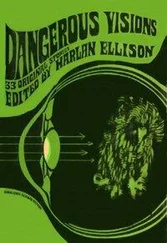The second banned production method was a process whereby artifacts were able to reproduce themselves after the manner of viruses if brought into contact with simple materials. The creation of self-replicating artifacts had become subject to world prohibition after the islands of Japan became buried beneath ever-growing mounds of still-multiplying TV sets, audvid recorders, cameras, autos, motor-bikes, refrigerators, helicopters, pocket computers, transistor radios, portphones, light aeroplanes, speedboats, furniture, sex aids, hearing aids, artificial limbs and organs, massage machines, golf clubs, zip fasteners, toys, typewriters, graphic reproduction machines, electron microscopes, house plumbing and electrical systems, machine tools, industrial robots, earthmovers, drilling rigs, prefabricated dwellings, ships, submersibles, fast-access transit vehicles, rocket-launchers, lifting bodies, extraterrestrial exploration vehicles, X-ray machines, radio, video, microwave, X-ray and laser transmitters, modems, reading machines, and innumerable other conveniences.
Of all innovations, however, the invention to have most impact on the modern British mind was undoubtedly the Harkham velocitator, which had abolished the impediment of distance and opened up infinity to the interested traveller. Theoretically the velocitator principle could give access to any velocity, however high, except one: it was not possible to travel a measured distance in zero time, or an infinite distance in any measured time. But in practice, a velocitator unit’s top speed depended on the size of its armature. After a while designing bigger and bigger armatures had become almost a redundant exercise. Infinity was infinity was infinity.
Velocitator speeds were expressed in powers of the velocity of light. Thus 186, Naylor’s present pace, indicated the speed of light multiplied by itself 186 times. Infinity was now littered, if littered was a word that could be predicated of such a concept, with velocitator explorers, most of them British, finding in worlds without end their darkest Africas, their South American jungles, their Tibets and Outer Mongolias.
In point of fact the greater number of them did precious little exploring. Infinity, as it turned out, was not as definable as Africa. Early on the discovery had been made that until one actually arrived at some galaxy or planet, infinite space had a soothing, prosaic uniformity (provided one successfully avoided the matterless lakes), a bland sameness of fleeting mushy glints. It was a perfect setting for peace and solitude. This, perhaps, as much as the outward urge, had drawn Englishmen into the anonymous universe. The velocitator habitat offered a perfect opportunity to ‘get away from it all’, to find a spot of quiet, possibly, to work on one’s book or thesis, or to avoid some troublesome social or emotional problem.
This was roughly Naylor’s position. The success of the thespitron had emboldened him to consider taking up the life of an inventor. He had ventured into the macrocosm to mull over, in its peace and silence, a certain stubborn technical problem which velocitator travel itself entailed.
The problem had been advertised many times, but so far it had defeated all attempts at a solution. It was, quite simply, the problem of how to get home again. Every Harkham traveller faced the risk of becoming totally, irrevocably lost, it being impossible to maintain a sense of direction over the vast distances involved. The scale was simply too large. Space bent and twisted, presenting, in terms of spatial curvature, mountains and mazes, hills and serpentine tunnels. A gyroscope naturally followed this bending and twisting; all gyroscopic compasses were therefore useless. Neither, on such a vast and featureless scale, was there any possibility of making a map.
(Indeed a simple theorem showed that large-scale sidereal mapping was inherently an untenable proposition. Mapping consists of recording relationships between locations or objects. In a three-dimensional continuum this is only really practicable by means of data storage. However, the number of possible relationships between a set of objects rises exponentially with the number of objects. The number of possible connections between the 10,000 million neurons of the human brain actually exceeds the number of particles within Olbers’ Sphere (which, before the invention of the velocitator, was thought of as the universe). Obviously no machine, however compact, could contain the information necessary to map the relationships between objects whose number was without limit, even when those objects were entire galaxies.)
Every velocitator habitat carried a type of inertial navigation recording system, which enabled the traveller to retrace his steps and, hopefully, arrive back at the place he had started from. This, to date, was the only homing method available; but the device was delicate and occasionally given to error – only a small displacement in the inertial record was enough to turn the Milky Way Galaxy into an unfindable grain of sand in an endless desert. Furthermore, Harkham travellers were apt, sometimes unwittingly, to pass through powerful magnetic fields which distorted and compromised the information on their recorders, or even wiped the tapes clean.
Naylor’s approach to the problem was, as far as he knew, original. He had adopted a concept that both philosophy and science had at various times picked up, argued over, even used, then dropped again only to resume the argument later: the concept of identity .
If every entity, object and being had its own unique identity which differentiated it from the rest of existence, then Naylor reasoned that it ought to be uniquely findable in some fictive framework that was independent of space, time and number. Ironically the theoretical tools he was using were less typical of empiricist thought than of its traditional enemy, rationalism, the school that saw existence as arising, not from material occasions, but from abstract categories and identities; but he was sufficiently undogmatic not to be troubled by that. He was aware that empirical materialists had striven many times to argue away the concept of identity altogether, but they had never, quite, succeeded.
Naylor imagined each individual object resulting from a combining, or focusing together, of universal logic classes (or universal identities), much as the colour components of a picture are focused on to one another to form a perfect image. It was necessary to suppose that each act of focusing was unique, that is to say, that each particle of matter was created only once. It would mean, for instance, that each planet had a unique identity: that a sample of iron from the Earth was subtly different from a sample of iron taken from the Moon, and it was this difference that Naylor’s projected direction-finder would be able to locate.
But was it a warrantable assumption, he wondered?
‘Ah, the famous question of identity,’ he said aloud.
The vodor lecture, heard many times before, became a drone. He turned it off and opened his notebook to scan one section of his notes.
‘IDENTITY AND NUMBER: The natural numbers, 1, 2, 3, 4, 5…, are pure abstractions, lacking identity in the philosophical meaning of the word. That is to say, there is no such entity as “five”. Identity in a set of five objects appertains only to each object taken singly… “Fiveness” is a process, accomplished by matching each member of a set against members of another set (e.g. the fingers of a hand) until the set being counted is exhausted. Only material objects have identity…’
In his fevered imagination it had seemed to Naylor that he need but make one more conceptual leap and he would be there, with a sketch model of the device that would find the Milky Way Galaxy from no matter where in infinity. He believed, in fact, that he already had the primitive beginnings of the device in the thespitron. For although no physical mapping of the universe was possible, the thespitron had achieved a dramatic mapping of it, demonstrating that the cosmos was not entirely proof against definition.
Читать дальше












